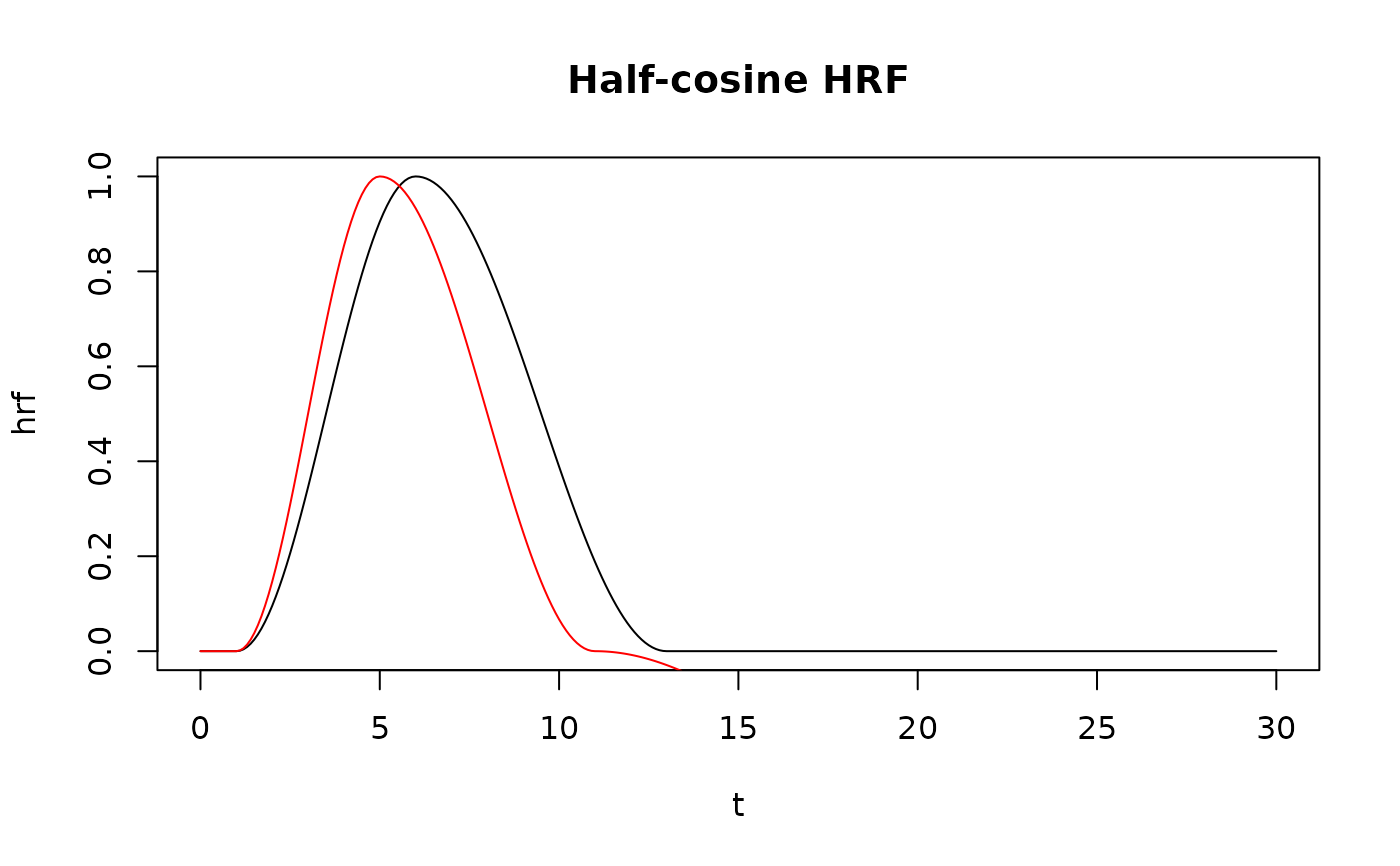This function models a hemodynamic response function (HRF) using four half-period cosine basis functions. The HRF consists of an initial dip, a rise to peak, a fall and undershoot, and a recovery to the baseline.
Arguments
- t
Time points at which to evaluate the HRF
- h1
Duration of initial fall from f1 to 0 (default: 1)
- h2
Duration of rise from 0 to 1 (default: 5)
- h3
Duration of fall from 1 to 0 (default: 7)
- h4
Duration of final rise from 0 to f2 (default: 7)
- f1
Initial baseline level (default: 0)
- f2
Final baseline level (default: 0)
Value
A vector of HRF values corresponding to the input time values.
Numeric vector of HRF values at time points t
References
Woolrich, M. W., Behrens, T. E., & Smith, S. M. (2004). Constrained linear basis sets for HRF modelling using Variational Bayes. NeuroImage, 21(4), 1748-1761.
Half-cosine HRF
Creates a hemodynamic response function using half-cosine segments. The function consists of four phases controlled by h1-h4 parameters, with transitions between baseline (f1) and peak (1) and final (f2) levels.
